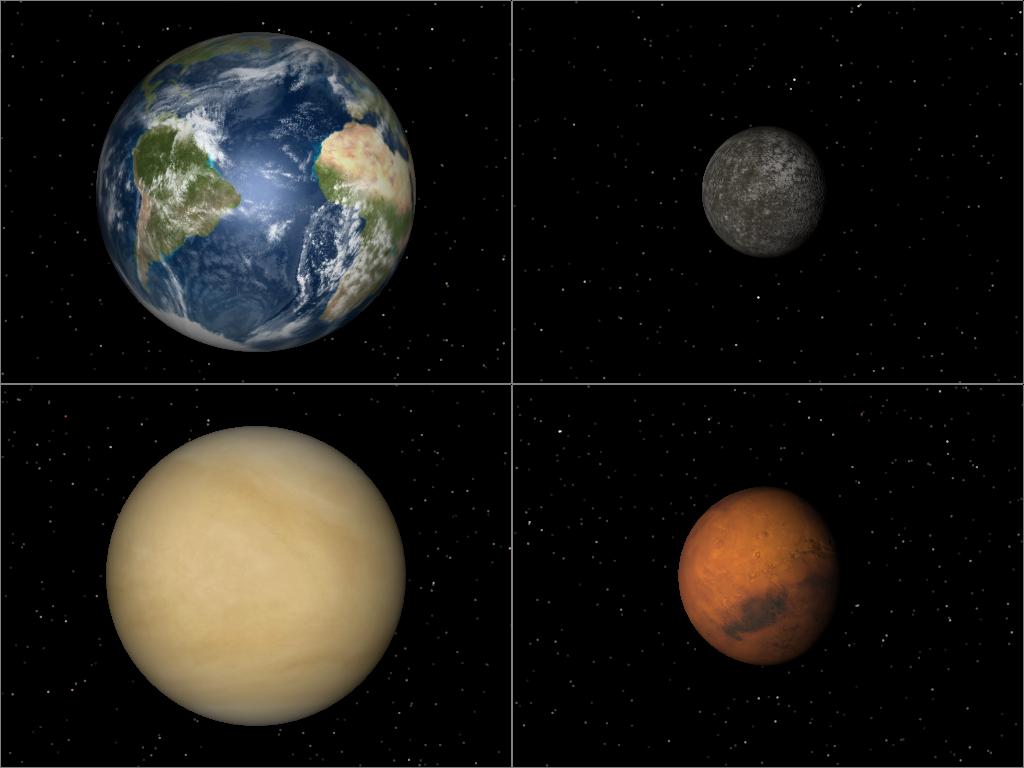
 Copyright © Michael Richmond.
This work is licensed under a Creative Commons License.
Copyright © Michael Richmond.
This work is licensed under a Creative Commons License.
The homework for today focuses on an asteroid even though we won't talk about asteroids until next week ....
There are many different bodies orbiting the Sun in our Solar System. Scientists have come up with many ways to classify them. One common division is
Today, we'll take a look at the major terrestrial bodies; tomorrow, we'll turn our attention to the gas giants. Terrestrial bodies are simply those with solid surfaces on which one could stand. The Earth is a nice terrestrial planet.
The usual order in which one presents the planets is by their distance from the Sun: Mercury, Venus, Earth, Mars. That makes sense for several reasons, especially if one considers the overall composition of the planet. However, I am going to take a different approach, and arrange the bodies by their "hospitality" to people in a wayward spacecraft.
Below is a "family portrait" of the largest terrestrial bodies in the Solar System. All are viewed from the same distance (about 53,000 km) so that the pictures reflect their relative sizes correctly.
First, we have the really big ones: clockwise from upper left, Earth, Mercury, Mars and Venus.

Next, the four large moons of Jupiter: clockwise from upper left, Io, Europa, Callisto, Ganymede.
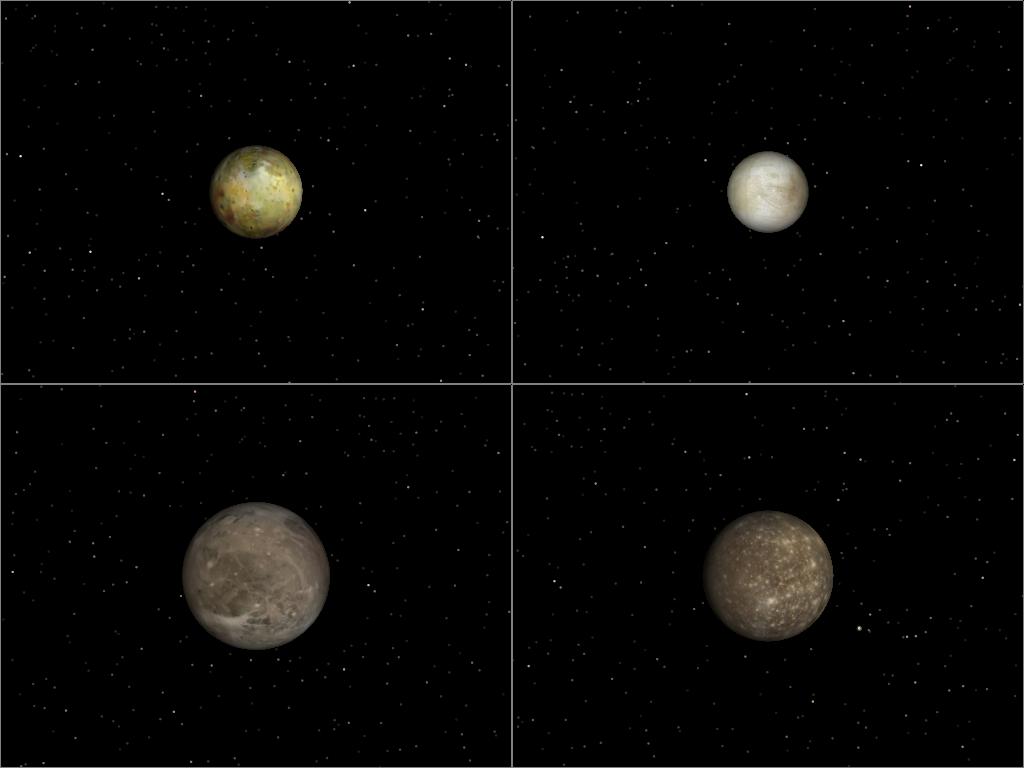
Finally, three more large moons: Titan and Triton in the upper row, and, at lower left, the Earth's Moon. Last of all, at lower right, is Ceres, the largest asteroid. It doesn't really belong here, but I include it so that you can see how it (and smaller asteroids) compare in size to the big boys.
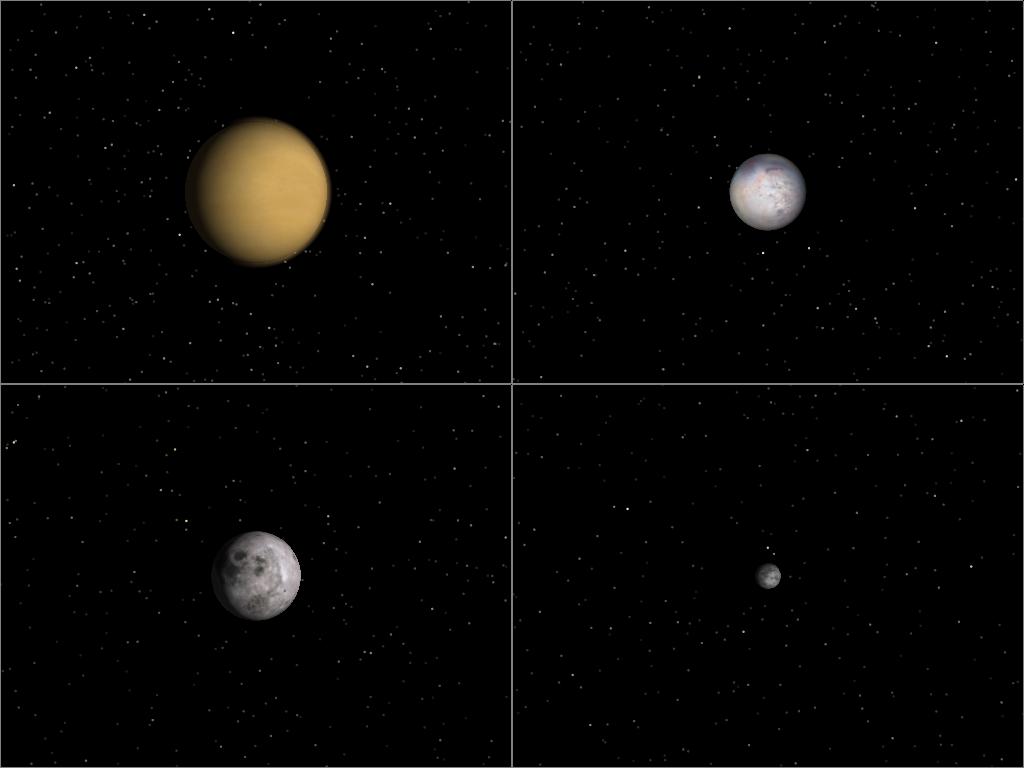
Venus is NOT a good place to crash-land your spaceship. Why? Well, the main problem is its very, very thick atmosphere. The picture below shows it with (on left) and without (on right) its layers of clouds. The coloring of the surface isn't accurate, by the way: it isn't really bright yellow.
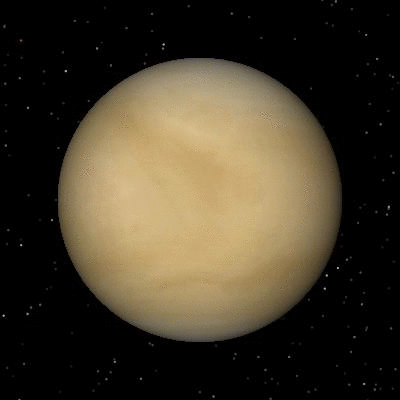
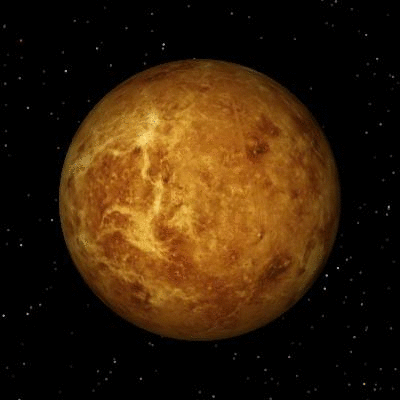
The atmosphere of Venus is much, much thicker than that of the Earth. It is also composed of nasty stuff.
Why is Venus so hot? Well, it is closer to the Sun than the Earth is.
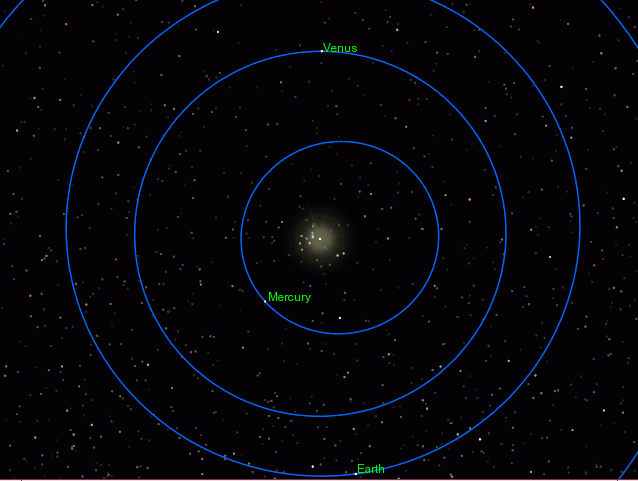
The orbital radius of Earth is 1.0 AU
The orbital radius of Venus is 0.72 AU
The intensity of light from the Sun (or any source)
decreases as the inverse square of the distance.
2
Intensity (r2) ( r1 )
---------------- = (----)
Intensity (r1) ( r2 )
Q: How much stronger is sunlight at the distance
of Venus than at the distance of Earth?
Could that explain the enormous difference
in temperature?
No, the reason that Venus is so much hotter than the Earth is that its thick atmosphere traps much of the heat: it transmits much of the visible and near-infrared light from the Sun down to the surface, but then absorbs the mid-infrared radiation emitted by the surface. It acts like the translucent panels of glass in a greenhouse:
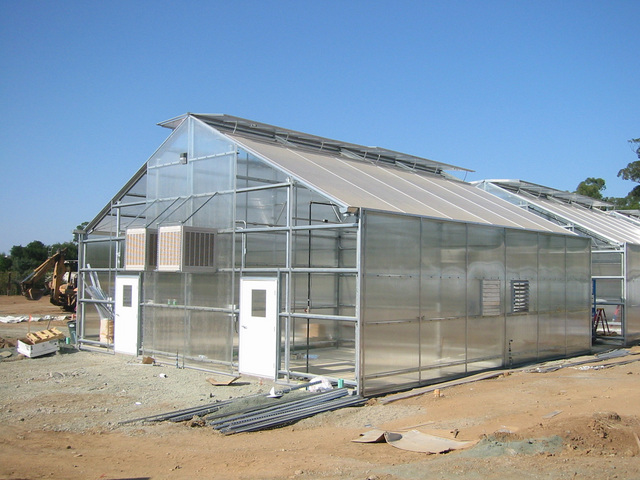
Note that the surface temperature of Venus, over 700 Celsius, is hot enough to melt lead, tin, zinc, and other metals. It would be very difficult to keep any spaceship cool enough for its electronics to function for very long. As a matter of fact, the only spacecraft to soft-land on Venus, the Soviet Venera 9, 10 and 13, returned data for only a few minutes before succumbing to the conditions.

See other pictures from the surface of Venus
at
Ted's Venera 13 page
Oh, one more thing: Venus has a relatively young surface, due to ongoing volcanic activity. Just one more thing to brighten your day (hour? minute?) on the surface.
Jupiter has four large moons, first observed by Galileo when he turned his telescope on the planet.
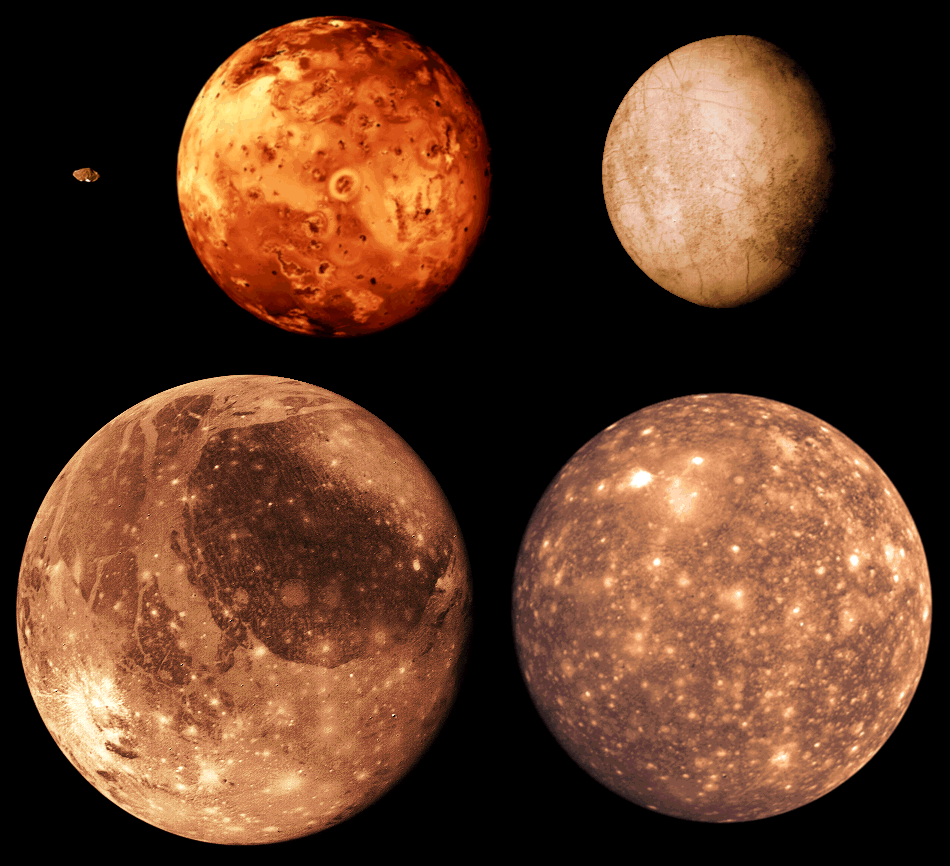
What's that little speck to the left of Io?
The irregular Jovian moon Amalthea.
Because they formed far from the Sun, these bodies have little refractory material (heavy elements with high melting and vaporization points, such as iron, nickel, silver, gold, platinum, etc.); they are instead made up mostly of lighter substances with lower vaporization temperatures: oxygen, carbon, silicon, hydrogen-rich compounds. The basic idea is that the Solar System was originally a cloud of mostly gas and dust, with small amounts of refractory materials. Close to the Sun, the heat of the Sun vaporized dust particles and prevented the resulting gas from condensing; all that was left was the residual refractory materials.
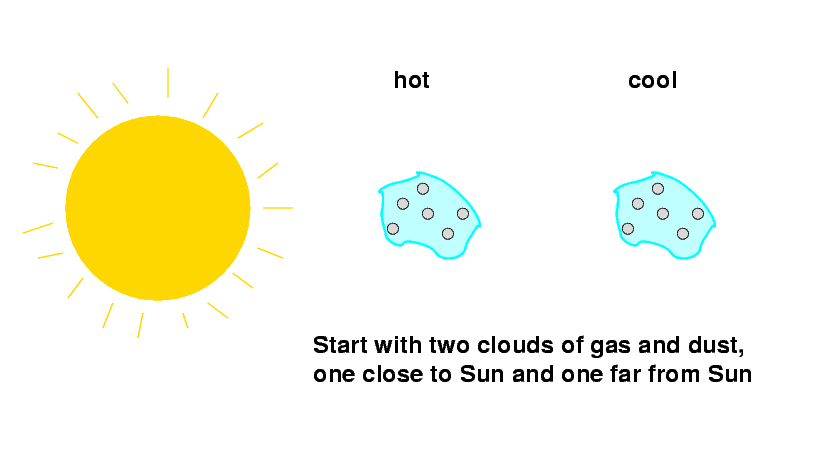
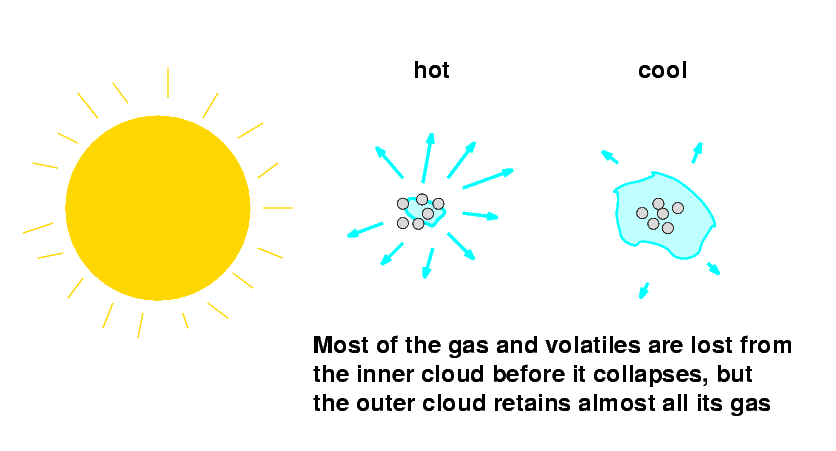
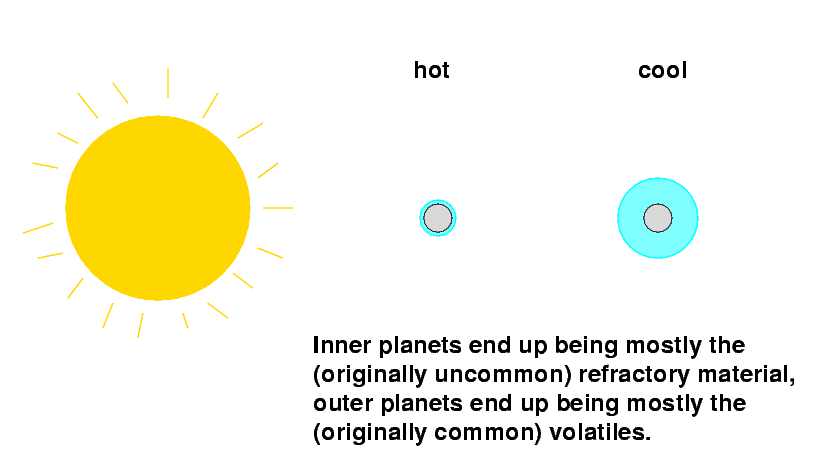
The overall density of these moons is therefore lower than that of terrestrial bodies in the inner reaches of the Solar System:
body density (water=1)
-----------------------------------------
Mercury 5.4
Venus 5.2
Earth 5.5
Mars 3.9
Io 3.6
Europa 3.0
Ganymede 1.9
Callisto 1.9
-----------------------------------------
Q: Do you notice a pattern in the density
of the Galilean moons? I've listed them
in increasing order of their distance
from Jupiter.
Can you explain the pattern?
The Galilean moons have long served as outposts for scientists and explorers in science fiction. In Arthur C. Clarke's book (and movie) 2010, for example, after the monoliths have turned Jupiter into a low-luminosity star by waving their magic wands, they tell humanity that "all these worlds (the Galilean moons) are yours, except Europa." Europa, in these books, has a native ecosystem the monoliths wish to protect. So, why have I classified them as hostile to stranded spacemen?
A minor issue is the tectonic activity on Io. Its surface is covered with sulfer-rich material emitted from many calderas and vents.
Each time the Galileo spacecraft flew past Io, it saw active eruptions and "lava" flows from several spots on the surface; the visible and near-IR image below, taken in 1997, shows several hot spots: the volcano Pillan is the brightest source, with Pele just to its lower left.
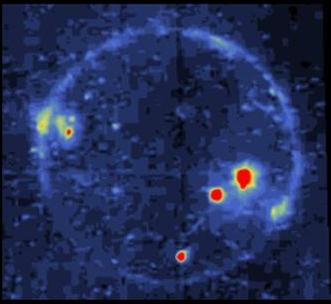
But the REAL reason that you would not want to be stranded on any of the Galilean moons is the deadly radiation. Jupiter has a very, very strong magnetic field which stretches far beyond the planet's cloudtops. The Cassini spacecraft detected particles trapped in these strong magnetic fields when it passed through the Jovian system in 2001: the picture below shows regions of "Energetic Neutral Atoms (ENA)" in red, with additional concentrations of materials near the orbits of Io (green) and Europa (blue).
These energetic particles would pose a serious health risk to astronauts. The only way to avoid them would be to build shields with thick layers of matter to block the high-energy particles. Probably the easiest solution would be to dig bunkers and live underground; but this would take a good deal of time and heavy machinery....
From our everyday point of view, we would not survive long if suddenly transported to any of these worlds: none of them has much of an atmosphere, for one thing. Mercury and the Moon are bare, dense balls of rock (though Mercury has a large core of iron). This picture of Mercury, taken by the Mariner 10 spacecraft in 1974 (or 1975), could stand for either body.
Now, Mercury is very close to the Sun, orbiting at roughly 0.39 AU. The temperatures on the surface reach over 300 Celsius during the long day (which lasts about 176 Earth days), and plunge to less than -160 Celsius during the equally long night. Since the Moon also lacks an atmosphere to transfer energy around the surface, it, too, suffers extreme temperature changes from day to night; since it it farther from the Sun, their range is somewhat smaller: from about -170 Celsius to about 130 Celsius. Large temperature ranges are difficult to endure, it's true.
However, if one travels to the polar regions of either body, one may find regions where the temperature remains relatively constant: inside deep craters, the Sun never shines, so it's always cold. There are hints that these permanently frozen areas may have collected useful deposits of volatile materials such as water ice, as comets have crashed into them over the eons.
Moreover, the very tiptops of these same craters' rims would always, or nearly always, see the Sun. It is possible, then, that the polar regions of these bodies might turn out to be pretty nice places: one would have a supply of solar energy and a store of water (from which oxygen could be extracted). It is much easier to build and maintain a comfortable human environment in a cold vacuum (as on the Moon and Mercury) than in a hot, dense atmosphere (as on Venus).
The last body in this category is Triton, the largest moon of Neptune.
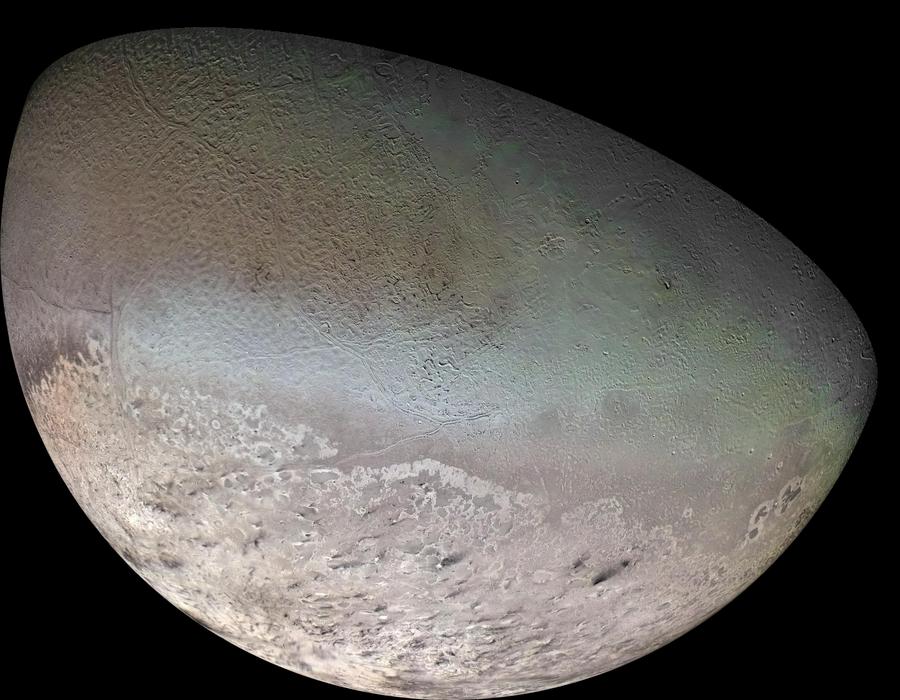
It has a very thin atmosphere, roughly 100,000 times less dense than Earth's, composed mostly of nitrogen. Since Triton, like Neptune, is very far from the Sun -- about 30 AU -- it is very cold: the surface temperature is roughly -238 Celsius. So why do I place this into the "neutral" category? As mentioned above, it isn't a very difficult engineering task to keep a habitat warm in a vaccuum. Triton lacks the abundant solar energy of the inner Solar System, but its surface is probably composed of icy materials which would easily yield useful chemicals such as hydrogen, oxygen, carbon and nitrogen.
You all know about the Earth, so I won't say anything else about it now.
For centuries, Mars has been seen as the most likely abode for life in the Solar System outside the Earth. Telescopes showed clearly that it had an atmosphere with occasional clouds and dust storms, and polar "ice" caps which grew and shrank with the Martian seasons. Consider these pictures, taken with small telescopes by Donald Parker, an amateur astronomer who does great work monitoring the planet.
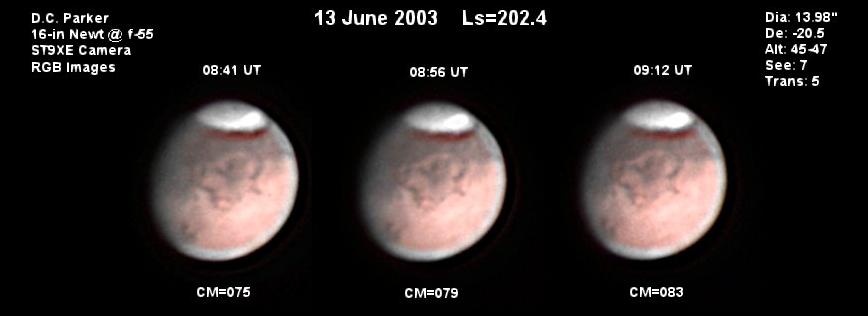

Since Mars is a bit farther from the Sun than the Earth, the surface temperatures a bit lower than ours: the air temperature near the equator ranges from slightly above freezing (0 Celsius) to less than -100 Celsius. It doesn't range as widely as the temperature on the Moon because the Martian atmosphere carries heat across the planet. That atmosphere is not thick enough to sustain human life -- only about one percent the density of the Earth's -- and, since it's mostly carbon dioxide, you wouldn't want to breathe it, anyway.
The polar caps contain a mixture of frozen carbon dioxide and water ice, which would be very handy for stranded humans.
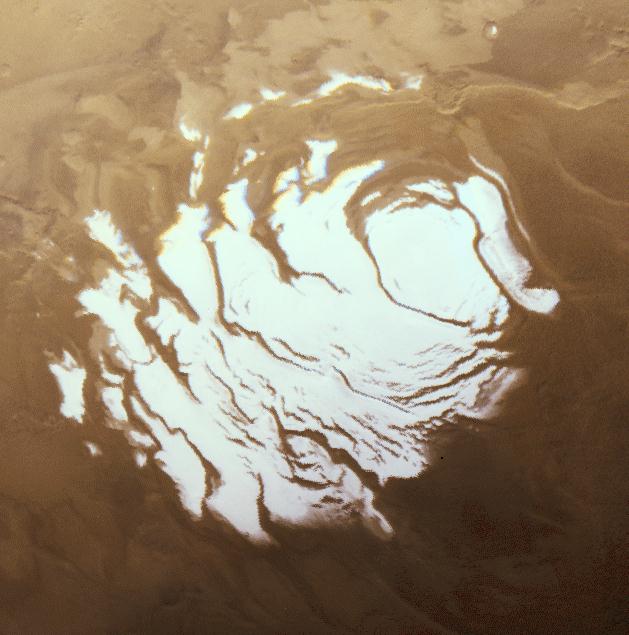
Finally, let's look at Titan, the largest moon of Saturn. Until recently, we were unable to peer beneath its thick cover of clouds, as in this image from Voyager 2.
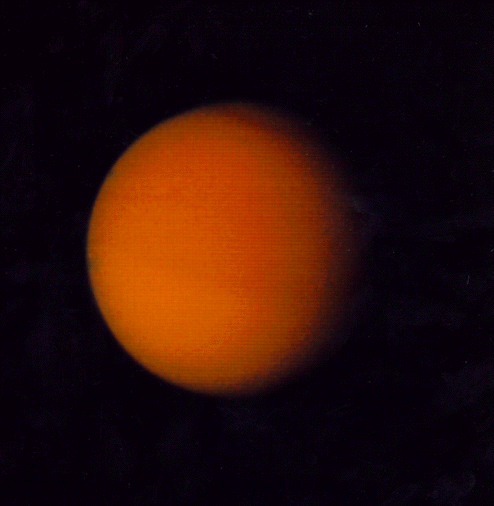
We knew that Titan had a thick atmosphere, about 50 percent denser than Earth's, made up mostly of nitrogen, with small amounts of methane and other hydrocarbons. We also knew that Titan was cold, with a surface temperature of about -180 Celsius. Some scientists speculated that the surface might have an exotic chemistry, with liquid oceans of methane and ethane; not a bad place, perhaps, for complicated molecules to grow ...
In early 2005, the Cassini spacecraft swept into the Saturn system. Its infrared camera was able to penetrate the cloud layers and see Titan's surface features at last:
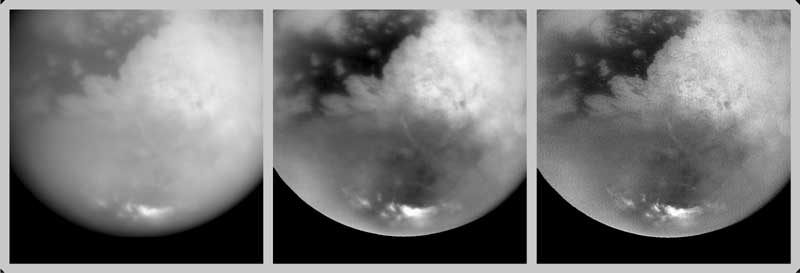
Cassini also dropped a probe called Huygens into the atmosphere of Titan, which parachuted safely to the surface.
Kevin Dawson put together a poster which combines some of the first images to be released from the Huygens probe. Click on the image below for the giant, full-size version.
It looks like some of the surface really is covered with liquids ...
Titan isn't really "friendly" to human life, but it might be a good place to look for other sorts of life: over the past four billion years, all sorts of interesting chemical reactions may have been occuring in its dense atmosphere and oceans.
 Copyright © Michael Richmond.
This work is licensed under a Creative Commons License.
Copyright © Michael Richmond.
This work is licensed under a Creative Commons License.